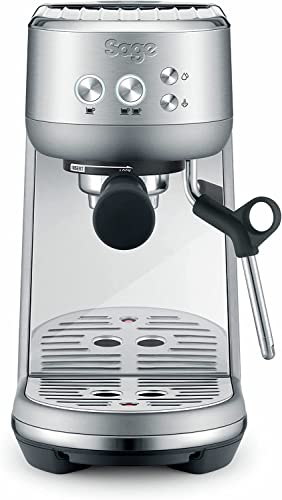How Does Machine Espresso Work?

The machine espresso makes use of precision pressure, and a filter technology that is awe-inspiring to create the coffee you love. What exactly does it work?
In order to make espresso, hot water is forced under high pressure through finely ground coffee. The process is similar to that of making drip coffee. However, the pressure is the main difference.
The Group Head
The group head is the portafilter you put in when making espresso. It disperses water in the portafilter and regulates the pressure of extraction. There are many different types of group heads each with distinct advantages and disadvantages. Some are focused on temperature stability, some on pre-infusion options, and others are designed to control the lever. Some are a combination, like the E61. This is a preferred choice for baristas due to the fact that it has multiple benefits in one package.
As you can see in the above image The group head features several notches where you place your portafilter and then twist it manually to lock it in. A gasket made of rubber is positioned inside the notches to help create a seal as you insert your portafilter. The notches allow for precise placement of the portafilter. This is vital for a consistent extraction.
Apart from allowing you effortlessly insert your portafilter the group head is also responsible for maintaining an even temperature. It does this by cycling hot water through the brew basket, and around the portafilter to ensure that it's always at the right temperature for extraction. This is vital, because even a small difference in temperature can mean the difference between good and excellent espresso.
The Pump
In contrast to piston machines that are manually operated, which rely on a lever that pressurize water, the rotary espresso machines use motorized pumps to deliver the nine atmospheric bars of pressure needed for espresso extraction. The pressure builds by removing tap water from a reservoir and pumping it through a heat exchanger before it is shot through the ground coffee inside the group head.
Pumps are typically less expensive and last for longer than piston-driven machines. However, both kinds of machines can degrade due to overuse and poor cleaning. They also increase the complexity of mechanical systems which can result in a high price tag on even the most basic models.
Certain espresso machines eliminate the pump entirely and utilize steam pressure to make espresso. The downside is that the boiler that produces steam also increases the temperature of water to the point of boiling and can result in over-extraction. Additionally the machines often have to rebuild their pressure between cups, which takes time and energy.
Many espresso machines use a rotary or vibration pump. A vibration model utilizes a rotating disk to generate pressure, whereas the rotating model pushes hot water through the ground at a fast speed. Both machines can make great espresso but rotary machines are more quiet, durable and less likely to fail.
The Boiler
The boiler is the part that heats the water to the optimal temperature for extraction. The steam that is produced reaches the portafilter which holds the ground espresso coffee, and gets funnelled down into the cup. The steam causes enough pressure to push the grounds of the coffee through. This creates a layer crema on top. This is a hallmark of a great espresso.
There are three types of espresso makers, and they differ in the type of pump they employ and the degree of heat that the brew is. There are a variety of ways in which the brew could be controlled and the size of the cup that the machine can make.
The first espresso machines were steam-types. They used one boiler to make both brew and steam, but the pressure they could produce was not very high - two bars of atmospheric pressure at the most. The coffee tasted bitter and burned. The modern espresso machine was created by the Milanese producers Luigi Bezzerra & Desiderio Pavoni.
The most well-known espresso machine is a semiautomatic model with an electric pump. These are the things people think of when they think of an espresso maker. Semi-automatic machines require you to grind and tamp your beans yourself, but the pump regulates the flow of water and pressure. This is a perfect compromise between human control and mechanised reliability.
The Filter
Typically, espresso machines use a filter to separate out the grounds of coffee when they pass through the hot water. The filter is also an important component of the temperature control system, as it prevents the machine from overheating.
A filter also helps with flavor because it allows for the beans to flower for a longer period of time. This allows the beans to release their nuances and gives the chance for better extraction.
However, it is important to keep in mind that even a good filter can result in a poor cup of coffee, as the quality of the beans and extraction are essential.
It's here that the magic occurs. This is the reason why espresso tastes so good. The grouphead, often referred to as the brew head, is the place where the portafilter (the thingy you put the ground coffee into) is located when you're making espresso.
In an espresso machine that is driven by steam, hot water is heated in an airtight container to create steam. This then pushes the hot water through the grounds under high pressure. These types of machines are usually less expensive and easier to maintain than pump-driven models. machines espresso machines are however limited to create the perfect conditions for brewing as they only operate with 1-1.5 bar of pressure. The ideal shot requires 9-10 bars.
In recent years, espresso machines powered by compressed air-pump have become increasingly popular. They use an air compressor to force hot water through grounds and are significantly more portable than electric steam-driven machines.
